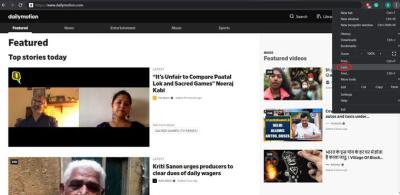In today's digital age, LinkedIn has become the go-to platform for professionals looking to connect, network, and showcase their career achievements. It serves as an online resume where individuals can present their skills, experiences, and endorsements. For many, it’s not just about job hunting; it’s also about building a professional identity. But what happens when you retire? Do you still engage with this platform? Let's explore how your retired status can shape your presence on LinkedIn.
The Benefits of Showing Retired Status on LinkedIn

Displaying your retired status on LinkedIn can be a game-changer for both you and your network. Here are some significant benefits to consider:
- Clarity for Connections: By stating your retired status, you provide clarity to your connections. They will understand that you are no longer seeking employment, which can lead to more meaningful interactions.
- Showcase Your Experience: Retirement doesn’t erase your wealth of experience. Highlighting your past roles and accomplishments can inspire others and establish you as a mentor in your industry.
- Networking Opportunities: Even in retirement, networking is valuable. Your retired status can lead to invitations for speaking engagements, consulting opportunities, or volunteer roles, keeping you active in your field.
- Focus on Passion Projects: Many retirees turn their attention to hobbies or causes they care about. By sharing these interests on LinkedIn, you can connect with like-minded individuals and potentially collaborate on projects.
- Inspire Future Generations: By sharing your journey, you can inspire younger professionals. They might benefit from your insights, advice, and the lessons learned over your career.
In conclusion, displaying your retired status on LinkedIn isn't just about signaling the end of your professional journey; it's about embracing a new chapter. Your experience remains valuable, and by sharing it, you can continue to make an impact in your community and industry.
Also Read This: How to Find an Email Address on LinkedIn: Strategies for Contacting
3. Potential Drawbacks of Displaying Retirement Status
While announcing your retirement on LinkedIn can feel like a well-deserved celebration, there are some potential drawbacks to consider. First off, there's the possibility of being perceived as less active or engaged in your industry. For many, retirement signifies stepping away from the professional spotlight, and this can lead to fewer networking opportunities.
Moreover, if you're still interested in consulting, freelance work, or part-time opportunities, listing yourself as retired might inadvertently close those doors. Potential clients or employers could assume that you're no longer available or that your skills may be outdated. It’s essential to think about how you want to position yourself.
Another aspect to consider is the response from your professional network. While many will applaud your decision, some may question your relevance in the industry. This might create an impression that you’ve completely disengaged, which can affect how others view your expertise.
Additionally, the online world is all about making connections and staying visible. If you retire your professional title, you might find fewer invitations to events, conferences, or even discussions that could have benefited from your experience.
Lastly, be cautious about how this status could affect your personal brand. If you've built a reputation as a thought leader or expert, declaring retirement might lead to a significant shift in how you're perceived. It’s worth weighing your desire for recognition against the potential impact on your career legacy.
Also Read This: How to Find Recruiters on LinkedIn Effectively
4. How to Update Your LinkedIn Profile to Reflect Retired Status
Ready to update your LinkedIn profile to reflect your retired status? Don’t worry; it’s a straightforward process! Here’s how you can do it effectively:
- Step 1: Log into your LinkedIn account and navigate to your profile.
- Step 2: Click on the pencil icon next to your profile picture to edit your introduction section.
- Step 3: Update your headline. Instead of just saying "Retired," consider adding a bit more flair. For example, “Retired Marketing Executive | Passionate About Volunteering and Mentorship.” This keeps your expertise front and center.
- Step 4: In your experience section, you can add a new position titled "Retired" along with the dates. You might want to include a brief description of your past experiences and what you plan to focus on during retirement, like volunteering, hobbies, or consulting.
Additionally, consider updating your summary section to reflect your journey. Share your experiences, key achievements, and what you're excited about in this new chapter. A personal touch will make it engaging!
Lastly, don’t forget to inform your connections about your retirement. A simple post can go a long way in letting your network know you’re stepping into a new phase of life. You can even ask for recommendations from colleagues to highlight your skills and contributions before you officially retire from the workforce.
By taking these steps, you can ensure your LinkedIn profile accurately reflects your retired status while keeping your professional identity alive and well. Happy updating!
Also Read This: How to Remove Connections on LinkedIn Without Them Knowing
5. Alternatives to Displaying Retired Status
If you’re pondering whether to display your retired status on LinkedIn, you might want to consider some alternatives that can still convey your experience and skills without explicitly stating you’re retired. Here are a few approaches:
- Highlight Volunteer Experience: Many retirees stay active by volunteering. Showcase these opportunities in your profile. This not only highlights your commitment to community service but also demonstrates that you’re still engaged and contributing.
- Use "Consultant" or "Advisor": If you’re open to freelance work or consultancy, you could label yourself as a consultant or advisor in your field. This presents you as a resource rather than someone who has stepped away from the professional sphere.
- Emphasize Skills and Achievements: Instead of a job title, focus on your skills and achievements. This can be done by listing specific projects or accomplishments in your profile summary, making it clear that you have a wealth of experience to offer.
- Create a Personal Brand: Rather than marking yourself as retired, think about building a personal brand around your hobbies or interests. For instance, if you’re passionate about photography, you can showcase your work and connect with others in that space.
- Engage in Networking: Use your LinkedIn profile to network with former colleagues or industry peers. This keeps you in the loop and maintains your professional presence without explicitly stating you’re retired.
By choosing one or more of these alternatives, you can remain active and visible on LinkedIn, showcasing your value without the label of retirement. It’s all about how you want to position yourself and what message you want to send to your connections.
6. Case Studies: Professionals Who Changed Their LinkedIn Status
To better understand the impact of changing LinkedIn status, let’s look at a few real-world examples of professionals who navigated their retirement status in unique ways.
Case Study 1: Joan, the Marketing Maven
Joan spent over 30 years in the marketing industry before deciding to retire. Instead of marking her profile as “retired,” she updated her status to “Marketing Consultant.” She actively engages in online workshops and offers her expertise to startups. Through her profile, she shares insights and case studies from her extensive career, maintaining a robust network and even attracting a few freelance opportunities.
Case Study 2: Tom, the Tech Innovator
Tom, a former tech executive, opted to label himself as “Advisor to Tech Startups.” By doing so, he positioned himself as a mentor rather than someone who’s out of the game. He regularly shares articles and insights about emerging technologies and trends, which keeps his connections informed and engaged. This has allowed him to build a personal brand that continues to thrive long after his retirement from full-time work.
Case Study 3: Linda, the Philanthropist
After retiring from her role as a corporate lawyer, Linda decided to focus on her passion for philanthropy. Rather than declaring her status as retired, she transformed her LinkedIn profile into a platform for her charity work. She highlights her volunteer experiences and connects with other professionals in the nonprofit sector, thus establishing a new network that aligns with her interests.
These case studies illustrate that how you present your status on LinkedIn can significantly impact your professional identity post-retirement. By creatively rebranding yourself, you can continue to make valuable connections and perhaps even explore new opportunities that align with your passions and expertise.
 admin
admin








